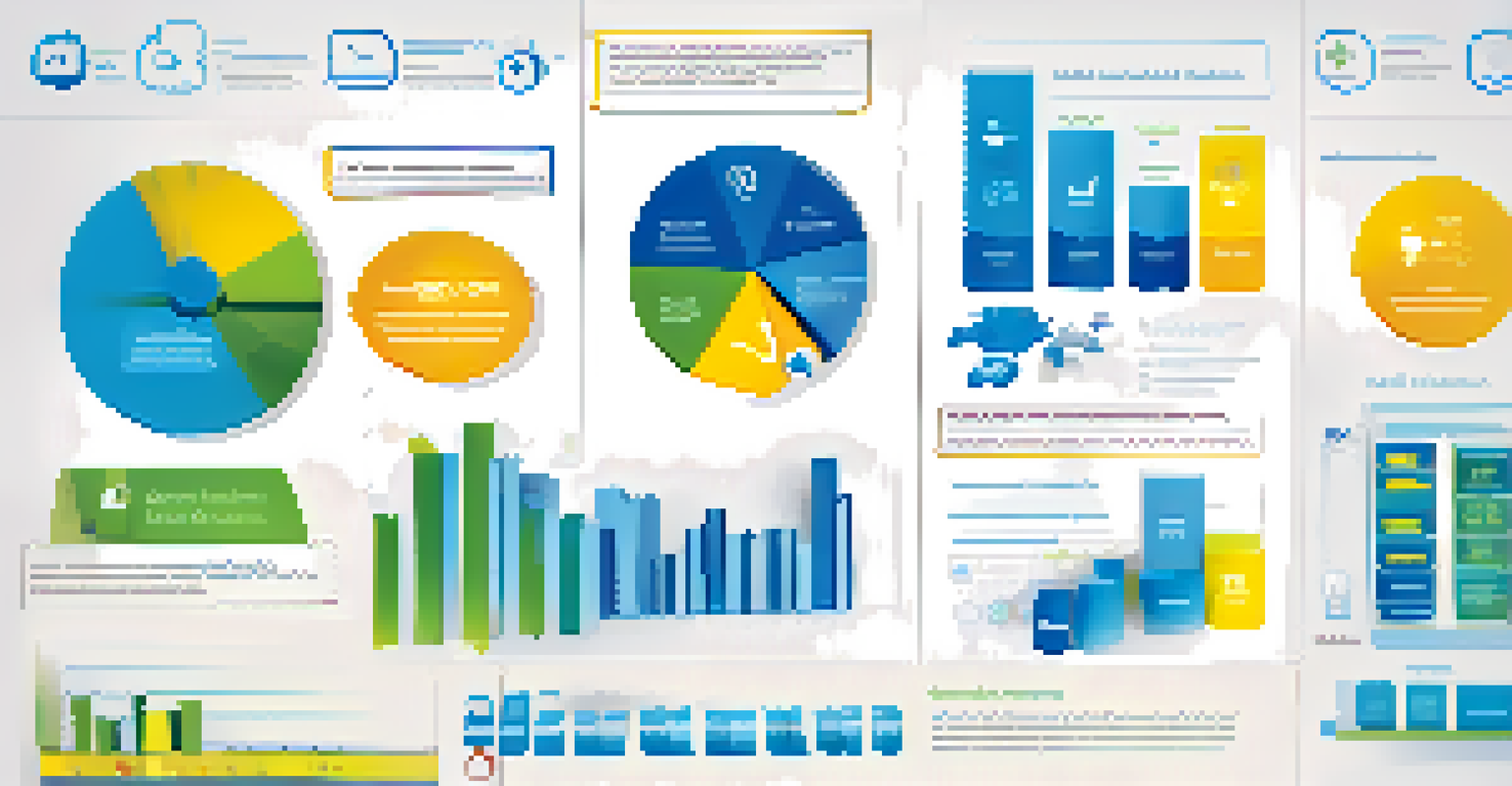Predictive Analytics in Education: Anticipating Student Needs

Understanding Predictive Analytics in Education
Predictive analytics refers to the use of statistical techniques to analyze current and historical data in order to make predictions about future events. In education, this means leveraging student data to identify trends and forecast potential challenges. Think of it like a weather forecast, but instead of predicting rain, it predicts students' academic performance.
Without data, you're just another person with an opinion.
By analyzing factors such as attendance, grades, and engagement levels, educators can gain insights into which students might need additional support. This proactive approach not only helps in addressing issues before they escalate but also fosters a more personalized learning environment. Imagine a teacher being able to tailor lessons based on individual student needs rather than a one-size-fits-all approach.
Ultimately, predictive analytics empowers educators to make informed decisions that enhance student success. It allows schools to allocate resources more effectively and ensure that every student has the opportunity to thrive. As more institutions adopt these techniques, the future of education looks increasingly data-driven and student-focused.
The Role of Data in Predictive Analytics
Data is the backbone of predictive analytics. In the educational setting, data can come from various sources, including student assessments, demographic information, and behavioral metrics. Just as a chef relies on quality ingredients to create a delicious dish, educators need accurate data to make sound predictions about student performance.

For instance, if a school notices a pattern where students from a certain demographic are consistently underperforming, they can delve deeper into the data to understand why. This might lead to discovering that these students lack access to certain resources or support systems. Armed with this knowledge, schools can implement targeted interventions that address specific needs.
Predictive Analytics Enhances Learning
By analyzing student data, educators can identify trends and provide tailored support to improve academic outcomes.
However, it’s crucial to handle data responsibly and ethically. Educators must ensure that student privacy is protected and that data is used solely for the purpose of enhancing learning outcomes. When done right, data can serve as a powerful tool to improve education for everyone.
Benefits of Predictive Analytics in Education
The benefits of predictive analytics in education are vast and multifaceted. One key advantage is early intervention; by identifying at-risk students early, schools can provide the necessary support before issues worsen. This is akin to catching a cold early with some rest and hydration, rather than letting it develop into something more serious.
The goal is to turn data into information, and information into insight.
Additionally, predictive analytics can enhance personalized learning experiences. Imagine a student who struggles with math concepts being provided with tailored resources that fit their learning style. This not only boosts their confidence but also leads to better academic outcomes.
Lastly, predictive analytics can aid in resource allocation. Schools can prioritize funding and support for programs that have the greatest impact based on data-driven insights. This ensures that every student receives the attention and resources they need to succeed.
Challenges in Implementing Predictive Analytics
While the potential of predictive analytics is exciting, implementing it in education comes with challenges. One major hurdle is the availability and quality of data. If the data collected is incomplete or inaccurate, the predictions made will likely lead educators astray. It’s like trying to navigate with a faulty map; you might end up lost.
Another challenge is the resistance to change. Some educators may be hesitant to adopt new technologies or methodologies, preferring traditional teaching methods that they are comfortable with. Overcoming this resistance requires education and training, showing educators the tangible benefits of predictive analytics.
Data Quality is Crucial for Success
Accurate and complete data is essential for making reliable predictions; otherwise, educators may be misguided.
Lastly, there’s the concern of data privacy and security. Schools must ensure that they are compliant with regulations and that student information is kept safe from breaches. Building trust with students and parents is essential for successful implementation.
Real-World Examples of Predictive Analytics in Education
Many educational institutions are already reaping the benefits of predictive analytics. For instance, some universities use analytics to identify students at risk of dropping out based on their engagement and performance data. By reaching out to these students with support services, they can improve retention rates significantly.
Another example is K-12 schools that analyze attendance patterns alongside academic performance. By recognizing trends, they can address issues like absenteeism proactively, ensuring that students don’t fall behind. It’s similar to a coach identifying a player’s weaknesses in practice and providing targeted training to improve their game.
These real-world applications highlight how predictive analytics can drive meaningful change in educational settings. By harnessing the power of data, institutions are not only enhancing student success but also creating a more supportive and responsive learning environment.
The Future of Predictive Analytics in Education
As technology continues to evolve, so will the capabilities of predictive analytics in education. The integration of artificial intelligence (AI) and machine learning is set to revolutionize how data is analyzed and utilized. Imagine a system that learns from each student's performance and adjusts recommendations in real time, creating a truly adaptive learning experience.
In the future, predictive analytics could also play a role in shaping curriculum development. By analyzing trends across various schools and districts, educators can identify the most effective teaching methods and materials. This data-driven approach ensures that students receive the best possible education tailored to their needs.
Future Holds Great Promise for Education
The integration of AI and machine learning in predictive analytics will revolutionize how educational data is analyzed and applied.
Ultimately, the future of predictive analytics in education holds great promise. As more schools embrace data-driven decision-making, we can expect to see improvements in student outcomes and overall educational quality, paving the way for a brighter future.
Conclusion: Embracing Predictive Analytics for Student Success
In conclusion, predictive analytics is transforming the educational landscape by anticipating student needs and enhancing learning experiences. It empowers educators to make informed decisions, tailor support, and allocate resources effectively. Just as businesses use data to understand customer preferences, schools can use analytics to better understand and support their students.
As we move forward, it’s essential for educational institutions to embrace this data-driven approach while addressing the challenges that come with it. By fostering a culture of innovation and collaboration, schools can maximize the benefits of predictive analytics and improve student outcomes.

Ultimately, the goal is to create an educational environment where every student can thrive. As predictive analytics continues to evolve, it holds the potential to unlock new pathways for learning and success, ensuring that no student is left behind.